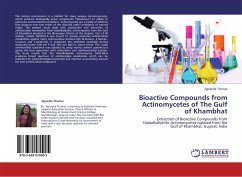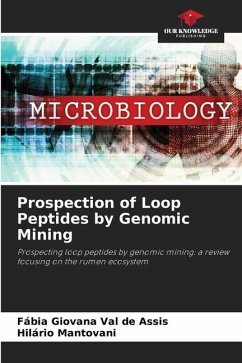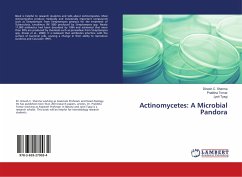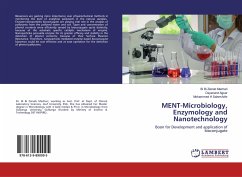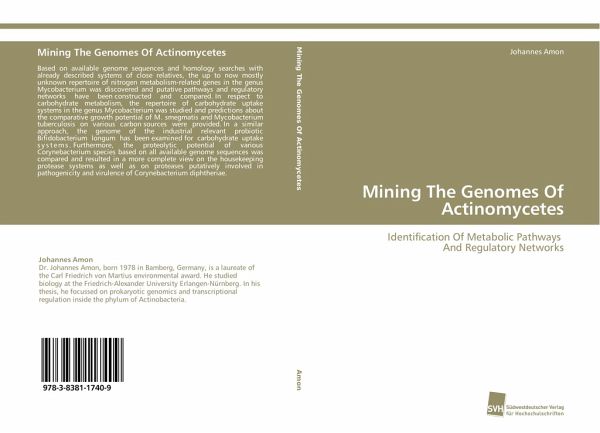
Mining The Genomes Of Actinomycetes
Identification Of Metabolic Pathways And Regulatory Networks
Versandkostenfrei!
Versandfertig in 6-10 Tagen
46,99 €
inkl. MwSt.

PAYBACK Punkte
23 °P sammeln!
Based on available genome sequences and homology searches with already described systems of close relatives, the up to now mostly unknown repertoire of nitrogen metabolism-related genes in the genus Mycobacterium was discovered and putative pathways and regulatory networks have been constructed and compared. In respect to carbohydrate metabolism, the repertoire of carbohydrate uptake systems in the genus Mycobacterium was studied and predictions about the comparative growth potential of M. smegmatis and Mycobacterium tuberculosis on various carbon sources were provided. In a similar approach, ...
Based on available genome sequences and homology searches with already described systems of close relatives, the up to now mostly unknown repertoire of nitrogen metabolism-related genes in the genus Mycobacterium was discovered and putative pathways and regulatory networks have been constructed and compared. In respect to carbohydrate metabolism, the repertoire of carbohydrate uptake systems in the genus Mycobacterium was studied and predictions about the comparative growth potential of M. smegmatis and Mycobacterium tuberculosis on various carbon sources were provided. In a similar approach, the genome of the industrial relevant probiotic Bifidobacterium longum has been examined for carbohydrate uptake systems. Furthermore, the proteolytic potential of various Corynebacterium species based on all available genome sequences was compared and resulted in a more complete view on the housekeeping protease systems as well as on proteases putatively involved in pathogenicity and virulence of Corynebacterium diphtheriae.



